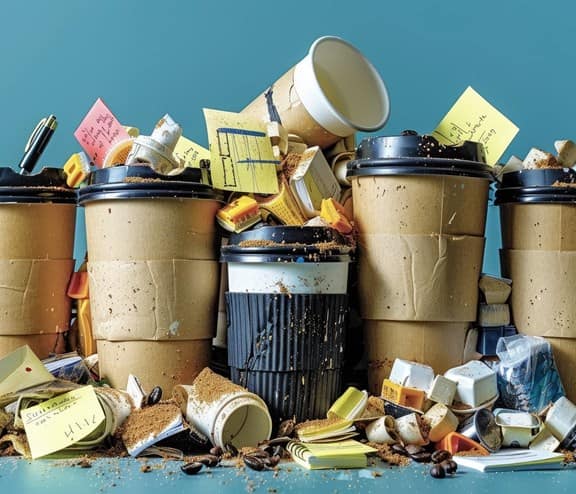
Disposable coffee cups: Why finding a solution to this everyday waste is more complicated than you think
The Complex Nature of Disposable Coffee Cups: The Need for a Unified Solution
Disposable coffee cups are a fixture in our daily lives, but their environmental impact presents a growing concern. With cups made from varied materials and complicated by different collection and recycling challenges, finding an effective solution to reduce waste is critical.
Materials and Sorting Challenges
Disposable coffee cups are made from diverse materials like paper lined with polyethylene (PE) and compostable plant-based alternatives. While PE-lined paper cups are the most common, they rely on separate collections and speciality mills to recycle. Compostable cups add further complexity, as they require specific composting facilities that many regions lack, and the compostable cups need shredding too which isn’t a widely offered service. Sorting these different materials correctly is essential but currently not possible for material recovery facilities. This underscores the need for clearer public guidelines on cup disposal.
The Recycling Process: Limitations and Contamination
Material recovery facilities (MRFs) face significant challenges in processing disposable coffee cups. Cups are often contaminated by leftover liquids and food scraps like tea bags or banana peels, which interfere with recycling processes and reduce the quality of recyclable materials. Additionally, the presence of mixed materials, such as PE lined, compostable, water based, and many more, complicate sorting, additionally lids are difficult to capture, due to their size too.
Policies and Consumer Initiatives
Efforts to reduce disposable cup waste have gained traction through various initiatives. In Scotland, a levy on disposable coffee cups aims to encourage consumers to bring reusable alternatives, with some coffee shops offering discounts for customers who bring their own cups. However, this policy has limitations, as forgetting reusable cups remains common. Furthermore, the question of mandating the collection of disposable coffee cups remains unresolved, with differing approaches across regions leading to inefficiencies in recycling.
The Push for Standardisation
The diverse types of disposable coffee cups on the market, each with different materials and disposal requirements, pose a major obstacle to recycling efficiency. The introduction of all-in-one cups that don’t require separate lids offers a potential way to reduce waste, but their safety and effectiveness are still being evaluated. Compostable cups, while seemingly a green option, require clear labelling, collection methods, and facilities that will accept them plus public awareness to ensure they reach those right facilities to compost them. Standardising materials and disposal methods across the industry, whilst educating consumers, could help streamline sorting and recycling processes, making it easier for facilities to handle the waste effectively.
Conclusion: Toward a Comprehensive Solution
Addressing the environmental impact of disposable coffee cups is a complex task that requires collaboration among policymakers, manufacturers, and consumers. Key steps include enhancing public awareness around cleaner disposal, investing in advanced sorting technologies, and developing standardised cup materials and collection and processing methods. Only through these combined efforts can we reduce the environmental footprint of disposable coffee cups and move toward a more sustainable future.